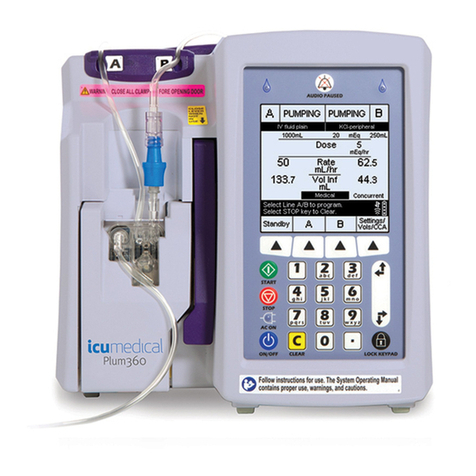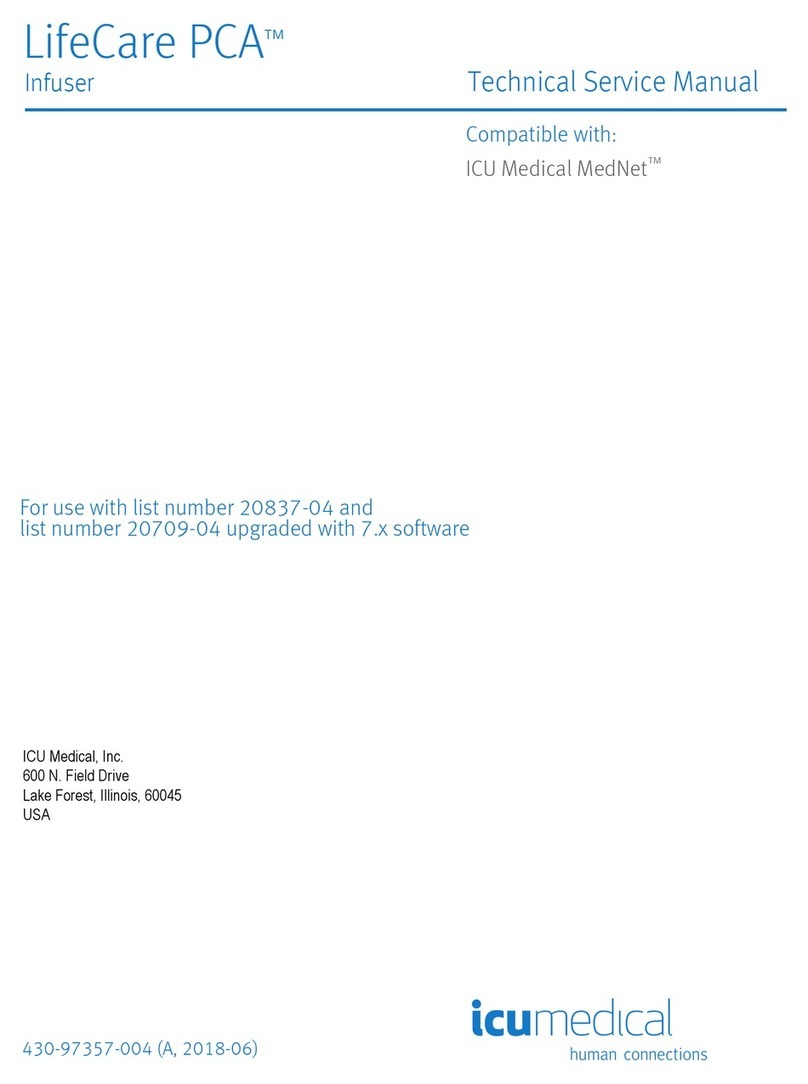Diana Peristaltic Pump, ICU Medical Page 3
4.1.4. Scale off ............................................................................................................................... 35
4.1.5. User Logout ......................................................................................................................... 35
4.2. Date and Time ............................................................................................................................. 36
4.3. Scale Calibration Check ............................................................................................................... 37
4.4. Advanced Settings ....................................................................................................................... 37
4.4.1. Edit Drug.............................................................................................................................. 37
4.4.2. Language.............................................................................................................................. 41
4.4.3. Custom Label Settings ......................................................................................................... 41
4.4.4. Print Setup........................................................................................................................... 41
4.4.5. Network Connections.......................................................................................................... 42
4.4.6. User Management............................................................................................................... 42
4.4.7. User Login at Startup........................................................................................................... 43
4.4.8. Require Drug Info ................................................................................................................ 44
4.4.9. Change Specific Gravity in the Drug Screen ........................................................................ 45
4.4.10. Complete Screen Display Interval in Seconds ..................................................................... 45
4.4.11. Logfiles................................................................................................................................. 46
4.4.12. Scale Deviation Borders....................................................................................................... 46
4.5. Technical Services........................................................................................................................ 46
4.6. Developer .................................................................................................................................... 46
5. Specifications, Maintenance and Troubleshooting............................................................................. 47
5.1. Accuracy Specifications ............................................................................................................... 47
5.2. Environmental Specification........................................................................................................ 47
5.3. Lithium-Ion Coin Battery Replacement ....................................................................................... 48
5.4. Fuse Replacement ....................................................................................................................... 48
5.5. Temperature Warning................................................................................................................. 49
5.6. General Troubleshooting............................................................................................................. 51
6. Warranty and Service Information...................................................................................................... 52
6.1. Limited Warranty......................................................................................................................... 52
6.2. Service and Contact Information................................................................................................. 53
Appendix A: Cleaning and Disinfection of the Diana Peristaltic Pump ....................................................... 54
Appendix B: Accuracy Verification Protocol................................................................................................ 55
Appendix C: Unit Software Update ............................................................................................................. 56
Updating the Software ............................................................................................................................ 56






























